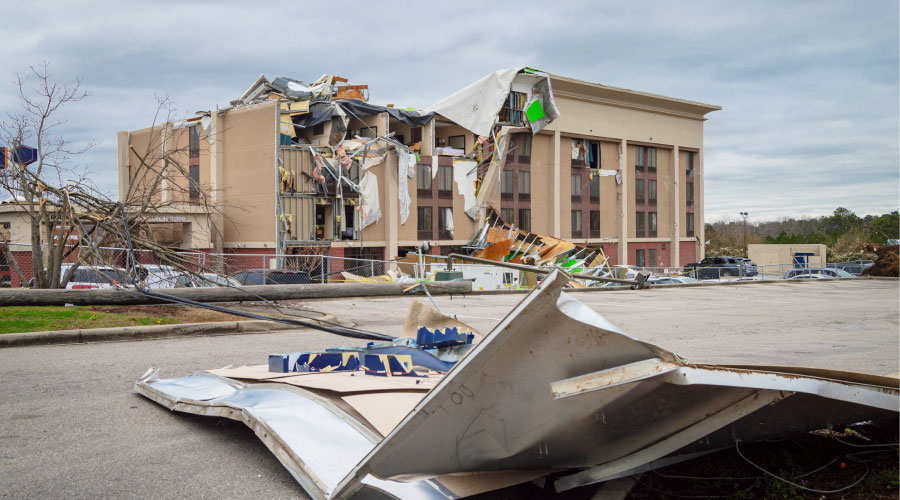Emergency Planning Helps Michigan Hospital in Flood Aftermath
The thunderstorms that rolled through Southeastern Michigan on Aug. 11, 2014, took a heavy toll on the region. The storms dumped 6 inches of rain on the area in two hours. Rain and winds from the storms damaged 40 percent of the businesses and homes in Dearborn and shut down 75 percent of the community's roads.
Oakwood Hospital-Dearborn was not spared from the storms' impact. The hospital, a 632-bed facility with 1.2 million square feet, sustained heavy damage to its emergency department. The lower level of the 60-year-old hospital flooded with up to 8 inches of storm water, which affected about 250,000 square feet of space, including the hospital's emergency department, the kitchen, radiation oncology, radiology, the in-patient pharmacy, and medical supply storage.
For Chris Soop, the hospital's administrator of support operations, and Kim Fortino, its director of environmental services, the flooding put their departments front and center in the hospital's response and recovery.
Planning And Response
The hospital's administration's first step in responding to the flooding was to initiate its internal disaster response plan that had been developed by its emergency management team, of which Soop is a member.
"We conduct a hazard vulnerability assessment to rate potential hazards, including snowstorms, flooding, power outages," Soop says. "Flooding is always within the top quarter" of the list of hazards.
The plan also outlines an essential role for the environmental services staff.
"Our department is always one of the first responders in any emergency, whether it's a flood or a snowstorm or anything else," says Fortino, whose staff is responsible for cleaning patient rooms, offices, and public areas, in addition to handling floor care, waste management, laundry and moving furniture.
"The water came rushing in like a river, so the two managers on duty grabbed the employees that could run the floor machines, and they got out the wet vacs and riding scrubbers and tried to pick up as much of the water as they could," Fortino says, adding that complicating her staff's challenge was the fact that their offices were in the flooded area. "Our department had to be relocated because we were in the basement."
At the same time, hospital staff addressed the threat that the rising water posed to patients in the emergency department.
"The first thing we thought of was to help the ER to make sure the patients were safe and to evacuate them from the ER," Soop says. "Luckily, we have a short-stay unit on the second floor that is fairly large, so we actually had a place to put them. The unit normally is for someone who stays for only 23 hours. They don't get a bed. They go from the ER to there and are discharged within 23 hours."
Patients were relocated quickly, and within 48 hours, the entire emergency department had been relocated to the second floor.
Focus on Flooding
Thunderstorms dropped 6 inches of water on Dearborn, Mich., on Aug. 11, 2014. The resulting floods pushed 8 inches of water into the lower level of Oakwood Hospital-Dearborn, causing heavy damage to its emergency department and to facility components and systems. Check out this video — http://ow.ly/KAlEg — of the hospital's response to and recovery from the flooding.
— Dan Hounsell, Editor
|
Related Topics:













